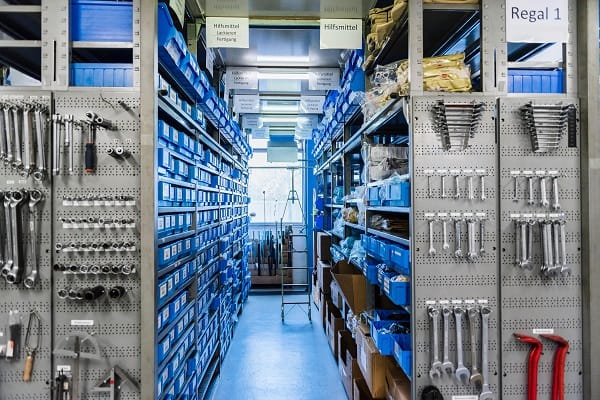Rapid market changes are reshaping the demands on warehouse management, pushing the need for agility to the forefront of strategic planning. As consumer expectations evolve and supply chains face unprecedented pressures, warehouses must adapt swiftly to maintain efficiency and competitiveness. This article delves into the essence of agility in the warehouse setting, offering actionable tips for managers seeking to navigate the challenges posed by market volatility. From technological advancements to innovative inventory strategies, we explore how to transform your operations to be more responsive, flexible, and efficient.
Understanding market volatility: A primer for warehouse managers
Market volatility has become a defining characteristic of the current business environment, directly impacting warehouse operations. Factors such as fluctuating consumer demand, global supply chain disruptions, and the rapid pace of technological change contribute to an unpredictable market. For warehouse managers, understanding these dynamics is crucial. It involves recognising patterns in demand, staying informed about global events affecting supply chains, and adapting to technological shifts. By developing a keen insight into these factors, managers can better prepare their operations to respond to changes effectively. This section aims to equip warehouse managers with the knowledge to identify signs of market volatility and implement strategies to mitigate its impact on warehouse operations.
The pillars of agility in warehouse management
Agility in warehouse management rests on several key pillars: flexibility, scalability, responsiveness, and innovation. Flexibility allows warehouse operations to adjust quickly to changes in demand or supply conditions. Scalability ensures that warehouses can efficiently manage varying levels of activity without compromising on performance. Responsiveness is the ability to quickly implement decisions and changes within the warehouse operation. Lastly, innovation involves adopting new technologies and processes that improve efficiency and adaptability. By strengthening these pillars, warehouses can better withstand the pressures of market volatility, ensuring that they remain competitive and capable of meeting changing customer demands. This section explores each pillar in detail, providing managers with strategies to enhance their warehouse’s agility.
Strategies for building a flexible warehouse layout
A flexible warehouse layout is pivotal in adapting to the changing needs of the market. This adaptability allows for the efficient handling of various products, volumes, and processes without major overhauls. Key strategies include modular shelving and storage systems that can be easily reconfigured as inventory needs shift. Implementing zones dedicated to specific activities, such as packing, returns, or fast-moving goods, enhances operational efficiency and can be adjusted based on current demand. Furthermore, integrating mobile shelving units and adopting a scalable footprint for storage and processing areas ensure that space can be optimised for peak and off-peak periods. Cross-docking practices reduce storage time and space for items with high turnover rates, directly impacting speed and cost efficiency. By prioritising a layout that supports quick adjustments, warehouses can maintain high levels of service and responsiveness regardless of market dynamics.
Technological innovations shaping agile warehouses
Technological advancements are at the heart of enabling warehouses to become more agile and responsive. Warehouse management solutions from Balloon One, including the use of a WMS (Warehouse Management System), are pivotal in this transformation. Such systems facilitate real-time inventory tracking, optimised picking routes, and automated replenishment alerts, ensuring that warehouse operations can adapt swiftly to changing demands. The integration of Korber WMS into warehouse systems represents a significant leap forward, offering advanced features that enhance efficiency, accuracy, and scalability.
Furthermore, automation technologies, such as robotic picking and autonomous vehicles, reduce manual tasks and improve operational speed. IoT (Internet of Things) devices and sensors provide continuous data on inventory levels, equipment status, and environmental conditions, enabling proactive maintenance and inventory management. Cloud-based warehouse management systems offer the flexibility to access critical data from anywhere, ensuring that decision-makers can respond to changes promptly. By embracing these technological innovations, warehouses can significantly improve their agility, positioning themselves to meet the challenges of rapid market changes effectively.
Optimising inventory for maximum efficiency
Optimising inventory is critical for maintaining maximum efficiency in agile warehouses. This involves striking the right balance between meeting demand and minimising excess stock to reduce storage costs and waste. A key strategy is implementing a robust inventory management system that provides real-time visibility into stock levels, sales trends, and supply chain dynamics. This enables warehouse managers to make data-driven decisions about stock replenishment, reducing the risk of overstocking or stockouts.
Another essential approach is adopting demand forecasting tools that leverage historical sales data and predictive analytics to anticipate future demand more accurately. This insight allows for more precise inventory planning, ensuring that the warehouse can respond swiftly to market changes without being burdened by unsold stock. Lean inventory practices, such as just-in-time (JIT) inventory, further enhance efficiency by receiving goods only as they are needed, reducing the holding costs and improving cash flow. Regularly reviewing and adjusting inventory parameters, such as reorder points and quantities, ensures that the warehouse remains aligned with current market conditions and demand patterns.
Empowering your team to support agility
The agility of a warehouse is significantly influenced by the capability and flexibility of its team. Empowering staff is about more than just providing the necessary tools and technologies; it’s about fostering a culture where innovation, flexibility, and proactive problem-solving are valued and encouraged. Training programs that focus on cross-functional skills enable workers to perform a variety of roles within the warehouse, increasing the operation’s overall flexibility. This multi-skilled workforce can adapt more easily to changes in demand, processes, or technology, ensuring that the warehouse can maintain high levels of service even under fluctuating conditions.
In addition to skills training, empowering your team also means involving them in decision-making processes and encouraging them to contribute ideas for improving efficiency and solving problems. This participatory approach can uncover innovative solutions and improvements that management might not have considered. Regular feedback loops, where employees can share their insights and experiences, help to identify potential issues before they become significant problems, further enhancing the warehouse’s agility. By investing in their team’s development and fostering a culture of continuous improvement, warehouse managers can build a resilient operation that thrives in the face of market volatility.
Conclusion
In the face of rapidly changing market conditions, the agility of warehouse operations has never been more crucial. This article has explored several key areas that warehouse managers can focus on to enhance their agility, from understanding market volatility and building a flexible warehouse layout to embracing technological innovations and optimizing inventory for maximum efficiency. These strategies play a vital role in enabling warehouses to respond swiftly and efficiently to market demands.
The integration of advanced warehouse management solutions, such as those offered by Balloon One, including the adoption of Korber WMS and other warehouse systems, underscores the importance of technology in achieving operational agility. By leveraging these tools, warehouses can improve visibility, increase efficiency, and reduce costs, thereby maintaining a competitive edge.
Moreover, the empowerment of warehouse teams has been highlighted as a critical factor in supporting agility. By fostering a culture of continuous improvement, encouraging cross-functional skills development, and involving staff in decision-making processes, warehouses can create a resilient and adaptable workforce capable of navigating the challenges posed by market changes.
In conclusion, the journey towards becoming an agile warehouse requires a holistic approach that encompasses strategic planning, technological adoption, inventory management, and team empowerment. By implementing these strategies, warehouse managers can ensure their operations are robust, flexible, and ready to meet the demands of an ever-changing market landscape.






Leave a Comment